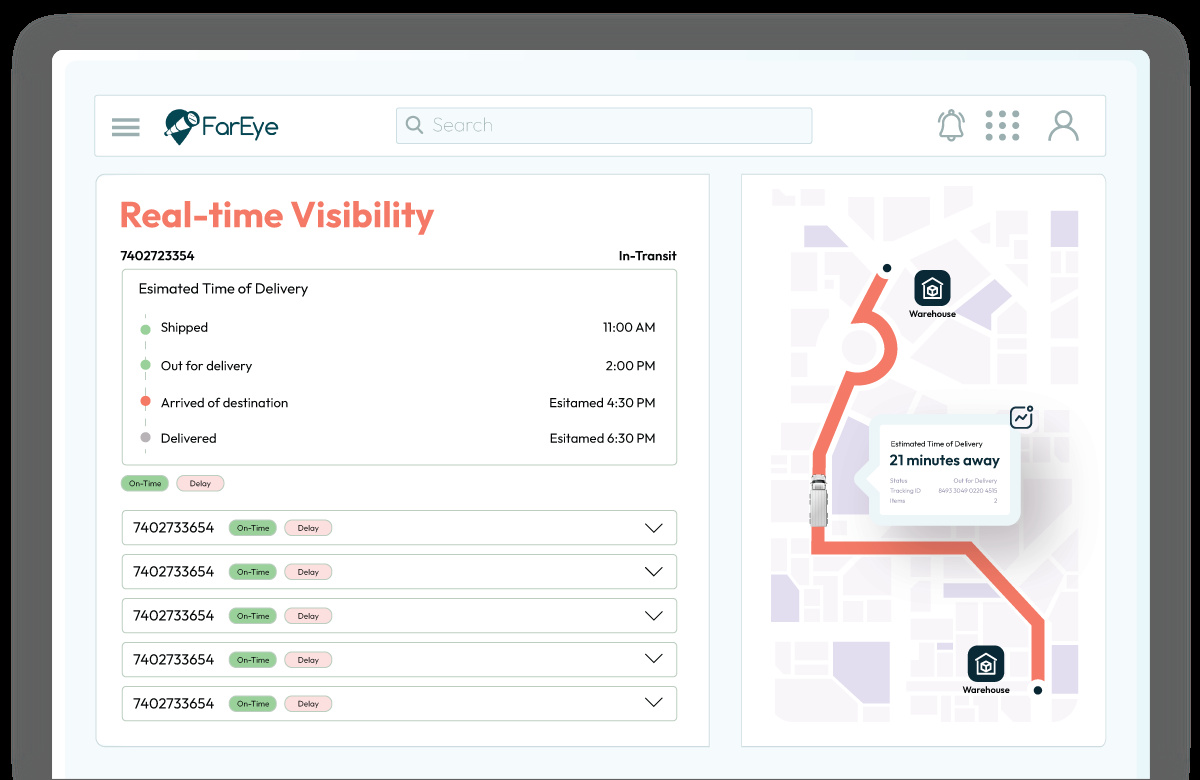- Route
Key Strategies for Optimizing Logistics Route Planning in Modern Supply Chains
Table of Contents
- Use AI and Real-Time Data to Make Smarter Decisions
- Consider Driver and Vehicle Constraints
- Maximize Load Efficiency
- Adapt Routes Dynamically
- Reduce Environmental Impact
- Ensure Seamless System Integration
- Leverage Historical Data for Better Planning
- Improve Communication and Collaboration
- Move Forward with the Right Approach

Every day, billions of goods are moving across the world. Businesses are racing to meet tight delivery deadlines. But as e-commerce is growing, traditional route planning systems are falling apart.
Imagine you are running a logistics company. You are promising next-day delivery. But your trucks are hitting traffic, delays are piling up, and customers are flooding your inbox with complaints. Your outdated system is failing to adjust to real-time obstacles. The result? Customers are getting frustrated, and your costs are increasing.

This issue is becoming more common. Logistics costs are consuming 8.7% of the national GDP. Without smart route planning, businesses are wasting money. To stay ahead, they are turning to better strategies. Let’s look at some practical solutions that are helping companies boost efficiency, cut costs, and keep deliveries on time.
Use AI and Real-Time Data to Make Smarter Decisions
More businesses are moving away from paper maps. Traffic conditions are changing by the minute. Weather patterns are shifting unpredictably. Delays are happening regularly. If you are relying on static systems, you are setting yourself up for failure.
AI is transforming logistics. It is processing real-time data, predicting delays, and rerouting vehicles instantly. AI-driven platforms are adjusting to congestion, fleet availability, and delivery deadlines as they happen.
Logistics route planning tools are leading this shift. These systems are not just analyzing traffic—they are predicting it. The platforms are suggesting faster routes and are identifying disruptions before they occur. This proactive approach is helping businesses stay on schedule, reduce fuel use, and ease driver stress.
Think about it—how much time and money you are saving by knowing a delay is coming before it happens?
Consider Driver and Vehicle Constraints
Not all fleets are the same. Every business operates under different constraints. Regulations, vehicle load limits, and driver availability all impact efficiency.
Governments enforce strict driving hours. Ignoring these rules leads to fines and safety risks. Trucks also vary. Some are perfect for short hauls, while others excel in long-distance deliveries.
And let’s not forget the drivers. Overworked drivers make mistakes. Fatigue leads to missed deadlines, accidents, and compliance violations.
Logistics route planning solves this puzzle. It considers driver shifts, vehicle limits, and delivery windows. The result? Balanced workloads, fewer compliance issues, and optimized deliveries. Happy drivers, happy customers, and a more efficient operation.
Maximize Load Efficiency
Half-empty trucks waste money. Every vehicle should run at full capacity. Smart load optimization eliminates inefficiencies.
Logistics companies manage two shipment types: Full Truckload (FTL) and Less-than-Truckload (LTL). FTL shipments fill an entire truck, while LTL combines smaller shipments into one route.
Routing in logistics optimizes both. It consolidates LTL shipments to reduce empty space. For FTL, it minimizes detours and maximizes truckloads. Businesses save fuel, reduce costs, and boost sustainability.
Adapt Routes Dynamically
Fixed routes don’t work in a fast-moving world. Traffic jams, road closures, and last-minute orders throw off schedules. Businesses need flexible routes.
Dynamic routing makes instant adjustments. Real-time traffic monitoring and geofencing allow companies to reroute trucks on the fly.
Logistics route planning makes this process seamless. Its platform updates routes as conditions change. Dispatchers get live insights, helping them make smart decisions fast. This reduces downtime, improves efficiency, and keeps customers happy.
Reduce Environmental Impact
Sustainability isn’t optional. Companies need to cut emissions without sacrificing efficiency. Smarter route planning helps.
Fewer miles mean less fuel burned. Better load management reduces unnecessary trips. Shorter idle times lower pollution.
Green logistics route planning solutions make sustainability easier. Its platform optimizes EV routing to maximize battery efficiency. Businesses reduce costs while shrinking their carbon footprint.
Ensure Seamless System Integration
Many businesses hesitate to adopt new tech because of integration concerns. Logistics teams already rely on Transportation Management Systems (TMS) and Order Management Systems (OMS). If a new tool disrupts workflows, it creates more problems than solutions.
Modern platforms remove this hurdle. Logistics route planning plug-and-play APIs connect smoothly with existing systems. Companies enhance route optimization without overhauling operations. The result? Faster adoption, better efficiency, and zero downtime.
Leverage Historical Data for Better Planning
Want to improve deliveries? Look at past routes. Historical data holds valuable insights.
Analyzing past performance reveals bottlenecks. It shows which routes work best and highlights where improvements are needed. Businesses can refine strategies with real-world data.
Logistics route planning software integrates historical analysis into its platform. Companies gain instant access to performance reports, helping them fine-tune their logistics plans.
Improve Communication and Collaboration
Smooth logistics require teamwork. Dispatchers, drivers, and customer service reps must stay in sync. Gaps in communication lead to mistakes and delays.
Logistics route planning bridges the gap. Its platform fosters real-time collaboration. Teams track deliveries, update schedules, and adjust routes instantly. Everyone stays informed, ensuring seamless logistics.
Move Forward with the Right Approach
Optimizing logistics route planning is no longer a luxury but a necessity. Today’s supply chains are more demanding than ever. Companies that invest in advanced technologies like AI, dynamic routing, and load optimization will stay ahead of the competition.
FarEye’s route planning software is leading this shift. It helps businesses overcome complex logistical challenges, reduce costs, improve sustainability, and keep customers happy.
Want to take your logistics to the next level? The future belongs to those who embrace innovation.
Reference:

Komal Puri is a seasoned professional in the logistics and supply chain industry. As the AVP of Marketing and a subject matter expert at FarEye, she has been instrumental in shaping the industry narrative for the past decade. Her expertise and insights have earned her numerous awards and recognition. Komal’s writings reflect her deep understanding of the industry, offering valuable insights and thought leadership.
Let's Talk to Our Experts and Optimize Your Deliveries Today!
An expert from our team will reach out within 24 hours
Related resources


